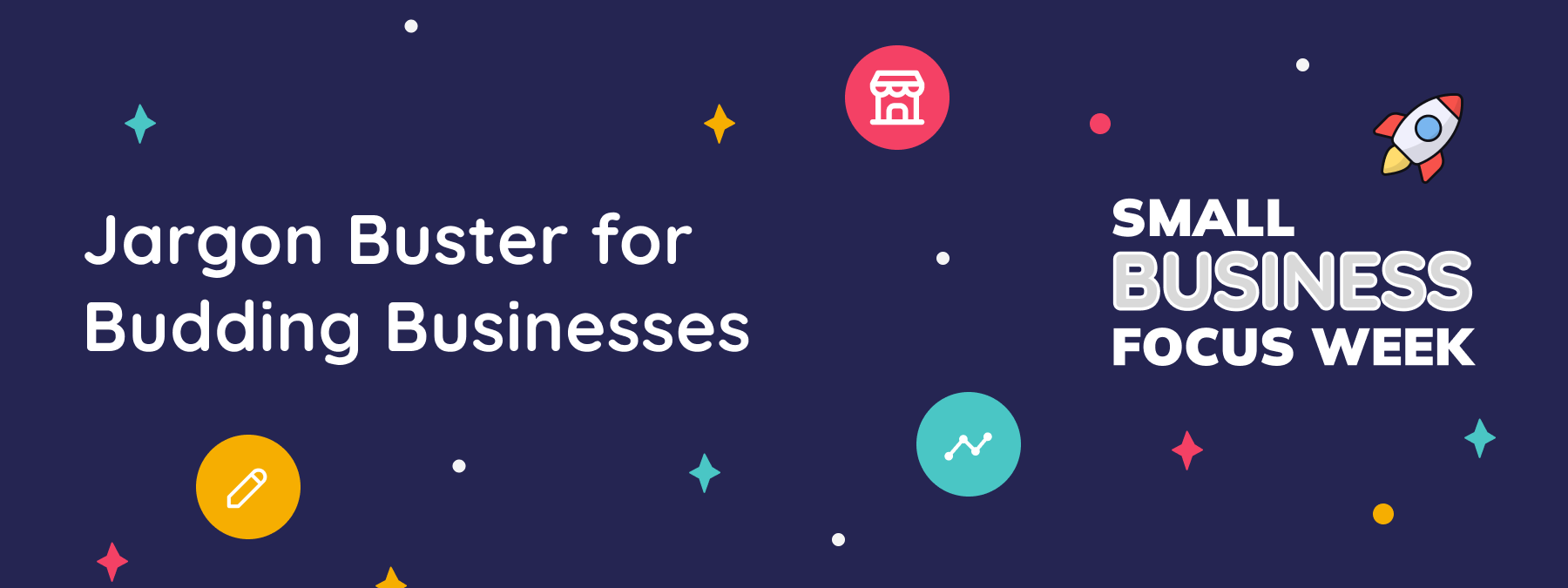You can manage your cookie preferences in the sections below. If you would like to know more, please view our cookie policy.

4 months ago
Jargon Buster for Budding Businesses
Welcome to the world of business, where understanding the language used can often feel like navigating a linguistic labyrinth of technical terms and acronyms. Becoming fluent in the jargon associated with running a small business in the UK can be a challenge for the uninitiated. In our jargon buster for budding businesses, we attempt to unravel perplexing terminology to help you make sense of the business landscape.
VAT (Value Added Tax)
VAT is a consumption tax tacked onto the price of goods and services. It's a crucial financial consideration for your business, and you may need to register for VAT if your taxable turnover exceeds a certain threshold.
Business Energy
Business energy refers to the electricity and gas supply to commercial properties. Understanding energy contracts, tariffs, and efficiency measures is crucial for cost management.
PAYE (Pay As You Earn)
PAYE is a system employers use to deduct income tax and National Insurance contributions from employees' wages and eliminate accounting errors. As a business owner, understanding PAYE is essential before hiring employees to ensure compliance with tax rules.

Business Banking
Business banking incorporates financial services tailored for businesses, including business bank accounts, which separate company funds from personal finances. Business banking is essential to allow owners to manage finances effectively.
Sole Trader
A sole trader operates their business as an individual, with no legal distinction between the business and its owner. While it offers simplicity, the individual is liable for the company's debts and keeps all profits.
Limited Company
A limited company is a legal entity separate from its owners and shareholders. Liability is limited, but it introduces more legal obligations and financial regulations.
Read more about the distinction between sole traders and limited companies.
Business Water
Business water refers to water supply services for commercial properties. Understanding water tariffs, conservation measures, and efficient water usage is vital for businesses.
Cash Flow
Cash flow is the movement of money in and out of your business, affecting day-to-day operations. Positive cash flow ensures you can cover expenses and invest in growth.
Learn more about cash flow in our guide.
Business Broadband
Business broadband is a high-speed internet solution tailored for commercial use. It ensures faster and more reliable internet connectivity, which is crucial for most modern business operations.
P&L Statement
A Profit & Loss statement details your business's revenues and expenses over a specific period. It's a crucial tool to help assess your business's profitability and make informed financial decisions.

Business Insurance
Business insurance provides cover against risks and liabilities. Common types include liability insurance, indemnity insurance, and cyber insurance, which protect business assets and operations.
Balance Sheet
A balance sheet provides a snapshot of your business's financial position at a specific time, showing assets, liabilities and shareholders' equity. SMEs need to evaluate their financial health from time to time.
Business Finance
Business finance encompasses various funding options for companies. It includes sources like business credit cards, asset finance and bridging loans to support business growth and stability.
Overheads
Overheads are ongoing business expenses, not directly tied to products or services, such as rent and utilities. Understanding overheads is essential for pricing and budgeting.
Break-Even Point
The break-even point is where total revenue equals total expenses, resulting in neither profit nor loss. Calculating it helps with price setting and other financial decisions.
ROI (Return on Investment)
ROI measures the profitability of an investment relative to its cost. It's a crucial metric for assessing the success of business strategies and optimising your investments.
B2B and B2C
Business-2-Business involves selling products or services to other companies, while Business-2-Consumer refers to sales directly to consumers. Understanding your target market is essential for effective marketing strategies.
CRM (Customer Relationship Management)
CRM systems help businesses manage interactions with customers. They store customer data, track leads and facilitate communication for a more streamlined workflow.
SWOT Analysis
SWOT analysis evaluates a business's strengths, weaknesses, opportunities and threats. It aids strategic planning by identifying internal and external factors affecting the industry, whether positive or negative.
Net Profit Margin
Net profit margin is the percentage of revenue that remains as profit after deducting all expenses. It's a vital indicator of a small business's financial efficiency and profitability.

Corporation Tax
Corporation tax is a Government levy on a company's profits. Understanding the applicable rates and compliance obligations is crucial to managing a business's tax liability.
Diversification
Diversification involves expanding product or service offerings or entering new markets to reduce risk and increase revenue streams. It's a strategy many successful SMEs use to enhance their resilience.
USP (Unique Selling Point)
Your USP is what makes your business stand out from the crowd. It could be unique features, exceptional quality or a distinctive service that competitors don’t offer and that attracts and retains your customers.
SEO (Search Engine Optimisation)
SEO is a marketing method that optimises your website to rank higher in organic search engine results. It's crucial for enhancing online visibility, driving traffic and reaching new customers.
SaaS (Software as a Service)
SaaS delivers software applications over the internet on a subscription basis. It's a cost-effective way for businesses to access and use helpful software without significant upfront costs.
Now You Know
From financial fundamentals like VAT and cash flow to the intricacies of business utilities and services, being well-versed in this jargon can empower small businesses to make informed decisions and thrive in today's market.
Feel free to seek answers if you ever grapple with unfamiliar terms or concepts. Here's to your business journey, armed with the knowledge to confidently navigate the twists and turns of terminology.
Let us Help Your Business
We help you compare essential business products and services, ensuring you get the best deal and helping you with your bottom line. Save time and money with us by comparing today.


